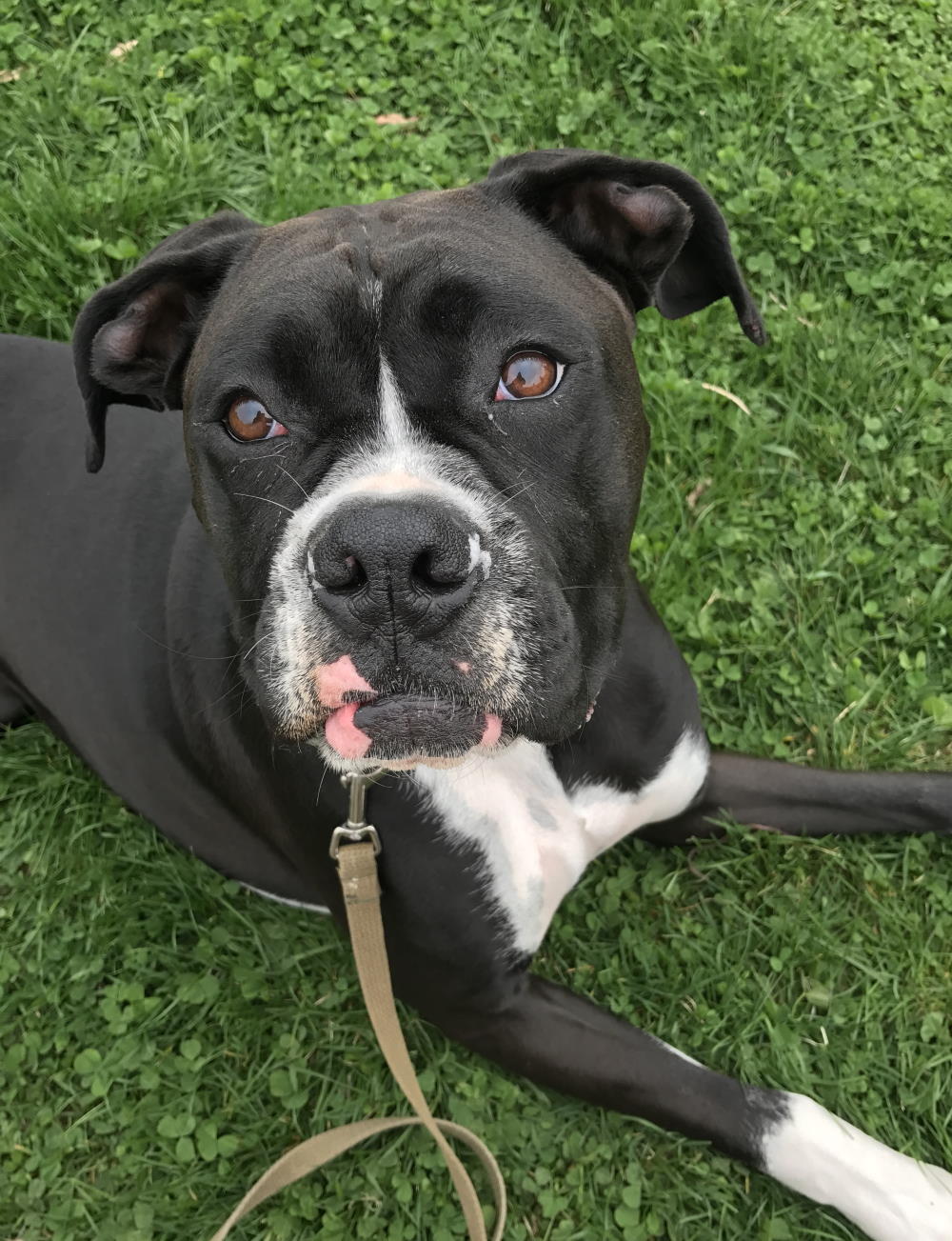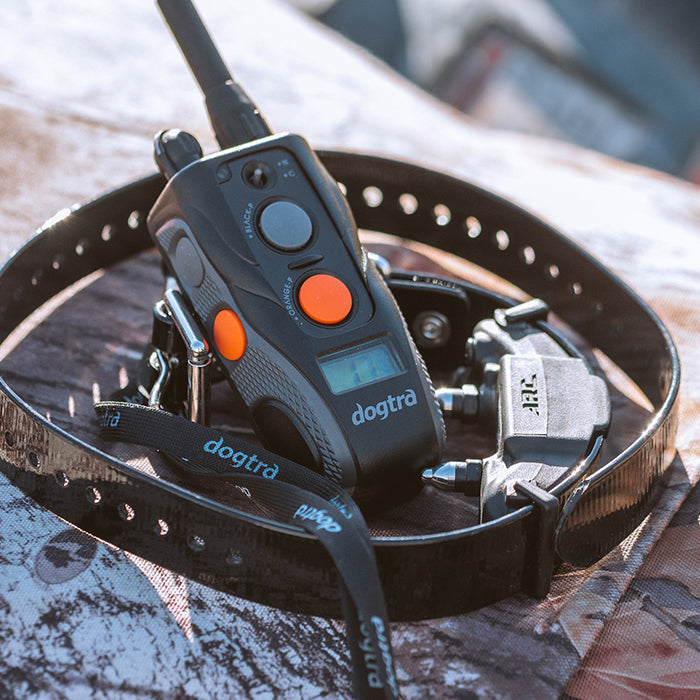HOW TO USE E-COLLAR TO STOP BARKING & LEASH REACTIVITY

Most of the questions I receive start with these words: “Can I use an e-collar for…”. The remainder of the sentence is usually followed by some form of aggressive behavior.
For example: Can I use an e-collar to stop my dog’s reactivity and lunging at other dogs? Can I use an e-collar to stop my dog from barking at strangers? Or, can I use an e-collar to stop my dog from chasing and trying to bite the cat?
The answer to these types of questions is both yes and no.
A two-sided response is necessary to create clarity for the dog owner about their expectations and their responsibility in managing their dog and the situations they put him in.
Let’s look at expectations first.
Dogs aren’t lunging at other dogs, barking at strangers or chasing cats because their intention is to make our lives difficult. They are lunging, most likely, because they are either poorly socialized or because we’ve inadvertently reinforced the behavior when the leash is on. So often, we accidentally create a situation where the dog feels threatened or frustrated due to the restraint.
Why Dogs Behave Aggressively
Dogs bark at strangers because they have a natural tendency to guard territory. It is one of the traits we found desirable in the early days of domestication, and it is still a retained trait in most dogs. If the dog barks at a person of ill intent or stops a burglar in our home, we praise and tell hero stories of their behavior. But if they bark or bite the Girl Scout that comes to the door, we’re suddenly flabbergasted at the “out of the blue” bad behavior. Dogs simply don’t possess the level of reasoning skill that allows them to know the difference between a good stranger and a bad one. They just know it’s a stranger.
And dogs chase cats because they are predators by nature. They chase things that run, either because they do want to catch and do harm or simply because it is fun and self-rewarding to make things run away.
The bottom line is, dogs do dog things.
But understanding “why” is only half the equation. If you want to change the dog’s behavior to suit your expectations, then you have to take responsibility to teach them what appropriate behavior actually is.
When to Start Dog Training & Socialization
Responsibility involves time and practice. As soon as we bring home a puppy, we should start a socializing process that exposes them to other dogs, other people, and new experiences in a positive way. This helps them learn to trust and how to handle the stress of new situations. We also have to take responsibility to train our dogs and teach a specific set of behaviors. By teaching actions such as Heel, Quiet, Come, Sit, or Down/Stay, we have a way to communicate what to do rather than allowing the dog to rely on his normal behavioral repertoire of chasing, barking, lunging, or biting.
How to Start Training Your Dog with an E-Collar
It is during this obedience training part of the dog-owner relationship that we can incorporate the remote training collar. This is where the tool shines and stands out above many other tools in its ability to communicate clearly, limit frustration, and provide off-leash control. Once your dog understands what to do, you can enforce those expectations and gain reliability around most distractions.
For example, if we teach that Heel means the dog must walk on our left side, staying in a position near our left leg, neither pulling ahead nor lagging behind, we can use that training when we pass other dogs. It just isn’t possible to obey the Heel command while simultaneously lunging and barking.
How to Use E-Collar to Stop Barking
Dogs have a strong innate tendency to bark. It's unrealistic to expect a dog never to bark, as some dogs bark almost reflexively. However, it's possible to train a dog to stop barking when prompted or in specific situations. Utilizing a remote trainer, you can control barking by teaching the dog to quiet down upon hearing a chosen command such as "Quiet!". Here are the steps that will help you control barking using an e-collar:
1. Set a Pre-Selected Intensity Level
Before starting the training, it's important to select the appropriate intensity level for your dog.
2. Trigger the Barking
Place your dog in a situation where he is likely to bark, such as when the doorbell rings.
3. Use Continuous Stimulation
Say "Quiet!" and press the continuous stimulation button for a moment, then release it. Repeat this several times in the first session.
4. Stay Consistent with Your Training
Repeat this lesson for a week, using different triggers to cause barking. Do not correct every barking episode, but if the dog isn't responding after two sessions, increase the intensity level.
5. Gradually Reduce Correction
After a week of lessons, don't press the button at all with the first "Quiet!" command. Press the button only if necessary when repeating the command.
By following these steps, you can effectively use an e-collar to stop barking and reinforce good behavior in your dog. Once a dog is taught that the word Quiet means to stop vocalization, he can’t bark at the same time he’s obeying a Quiet command. And if a dog is taught that Come means to return to your owner and Stay means not to move out of position, then managing to interrupt or stop cat chasing becomes a relatively easy task.
How E-Collar Helps Control Leash Reactivity & Barking
In all of the above scenarios, aggressive behavior is managed through reliable obedience training. And reliable obedience is much easier to obtain when an e-collar is part of the training process.
So YES, you can use an e-collar for a wide variety of problem dog behaviors, but NO, you should not try to shortcut the process by just “shocking the dog when he’s bad!” Using an e-collar out of sheer frustration may not give you the result you want. Instead, take time to incorporate it into obedience training. Reinforce the training and your expectations by practicing out in the real world. As you put these skills to use, your dog is learning a new, improved way to behave in situations that previously caused frustration. Together you will be building a stronger relationship based on cooperation and communication. It can open the door to a lot more fun adventures together!
Happy Training!




